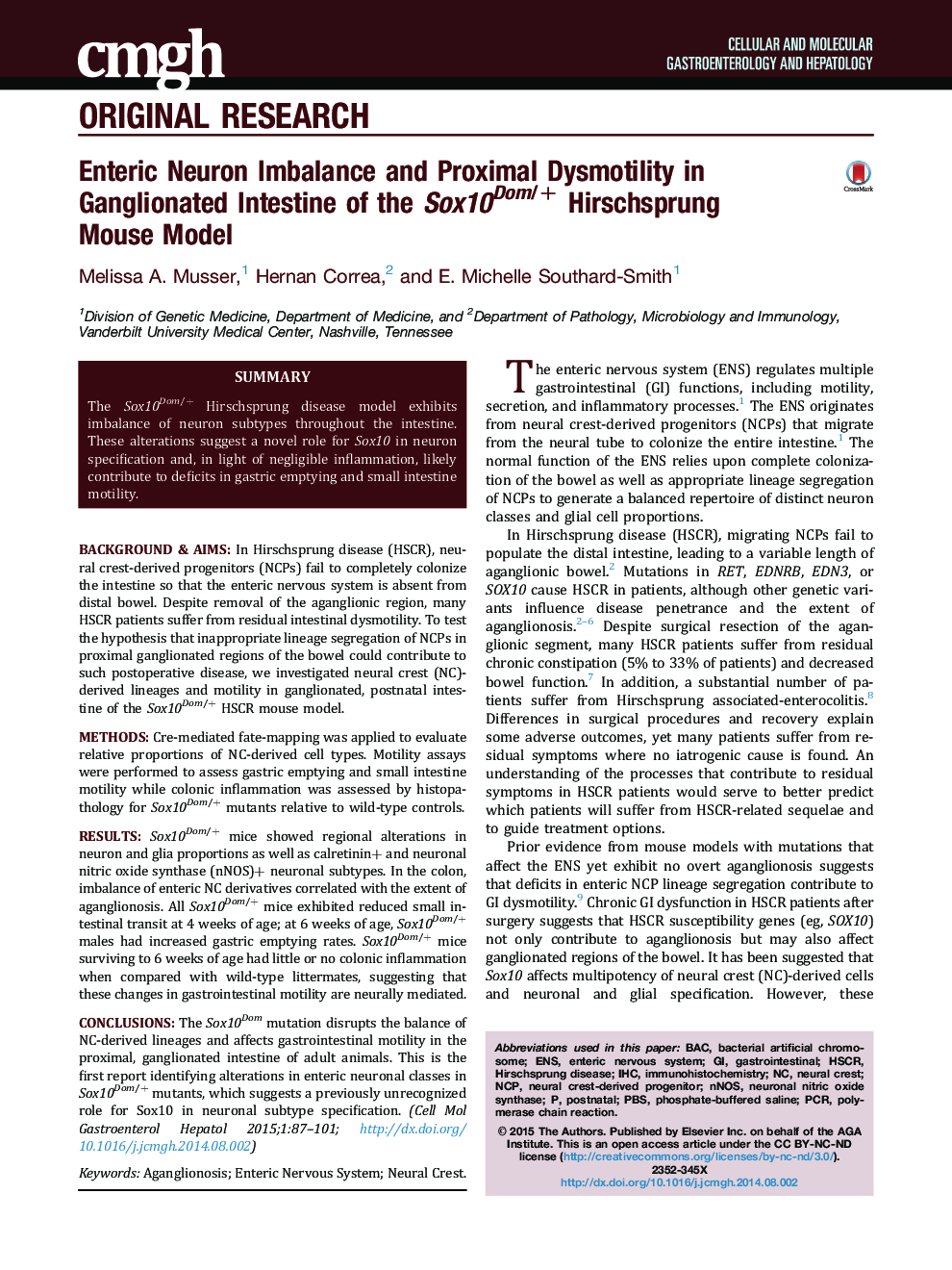| کد مقاله | کد نشریه | سال انتشار | مقاله انگلیسی | نسخه تمام متن |
|---|---|---|---|---|
| 2041785 | 1073173 | 2015 | 15 صفحه PDF | دانلود رایگان |

Background & AimsIn Hirschsprung disease (HSCR), neural crest-derived progenitors (NCPs) fail to completely colonize the intestine so that the enteric nervous system is absent from distal bowel. Despite removal of the aganglionic region, many HSCR patients suffer from residual intestinal dysmotility. To test the hypothesis that inappropriate lineage segregation of NCPs in proximal ganglionated regions of the bowel could contribute to such postoperative disease, we investigated neural crest (NC)-derived lineages and motility in ganglionated, postnatal intestine of the Sox10Dom/+ HSCR mouse model.MethodsCre-mediated fate-mapping was applied to evaluate relative proportions of NC-derived cell types. Motility assays were performed to assess gastric emptying and small intestine motility while colonic inflammation was assessed by histopathology for Sox10Dom/+ mutants relative to wild-type controls.ResultsSox10Dom/+ mice showed regional alterations in neuron and glia proportions as well as calretinin+ and neuronal nitric oxide synthase (nNOS)+ neuronal subtypes. In the colon, imbalance of enteric NC derivatives correlated with the extent of aganglionosis. All Sox10Dom/+ mice exhibited reduced small intestinal transit at 4 weeks of age; at 6 weeks of age, Sox10Dom/+ males had increased gastric emptying rates. Sox10Dom/+ mice surviving to 6 weeks of age had little or no colonic inflammation when compared with wild-type littermates, suggesting that these changes in gastrointestinal motility are neurally mediated.ConclusionsThe Sox10Dom mutation disrupts the balance of NC-derived lineages and affects gastrointestinal motility in the proximal, ganglionated intestine of adult animals. This is the first report identifying alterations in enteric neuronal classes in Sox10Dom/+ mutants, which suggests a previously unrecognized role for Sox10 in neuronal subtype specification.
Journal: CMGH Cellular and Molecular Gastroenterology and Hepatology - Volume 1, Issue 1, January 2015, Pages 87–101